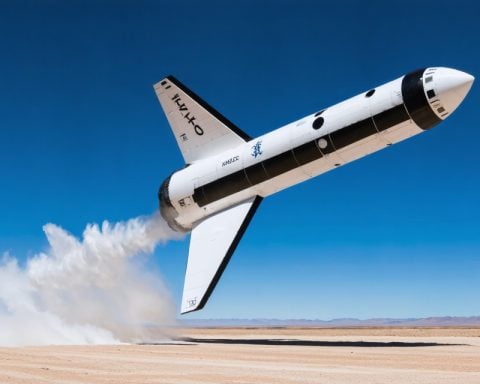- The NVS-02 satellite enhances India’s navigation capabilities with advanced technology.
- It operates on multiple frequency bands—L1, L5, and S—for improved accuracy.
- Equipped with both indigenous and imported atomic clocks, it ensures precise timing.
- The satellite strengthens the NavIC system, extending services beyond India’s borders.
- This advancement promises better positioning and timing for travelers and industries alike.
- The launch signifies a significant step toward modernizing navigation technology in India.
Prepare to be amazed as India takes a giant leap in space technology with the launch of the NVS-02 satellite! This state-of-the-art marvel is not just your ordinary satellite; it’s a game-changer in navigation. Equipped with an advanced navigation payload, the NVS-02 operates across three powerful frequency bands—L1, L5, and S—ensuring pinpoint accuracy for users on the ground.
What sets this satellite apart? It harnesses the power of both indigenous and imported atomic clocks. These cutting-edge clocks enable flawless time estimation, a crucial component for delivering precise navigation services. With the NVS-02, travelers and businesses alike can expect enhanced positioning and timing like never before.
This satellite strengthens the Indian constellation of navigation systems known as NavIC, an independent regional navigation satellite system designed to provide accurate position, velocity, and timing (PVT) services not only in India but also in regions extending up to 1,500 kilometers beyond its borders.
Imagine embarking on a journey with the confidence that your location is verified with unmatched precision! Thanks to the NVS-02 satellite, this vision is becoming a reality, creating new opportunities for travelers, industries, and technology enthusiasts across the nation.
In summary, the NVS-02 is not just about navigating the skies but also about navigating the future of technology. Get ready for a world where your every move is guided by precision and innovation.
Discover the Future of Navigation with India’s NVS-02 Satellite!
India has made significant strides in space technology with the launch of the NVS-02 satellite. This advanced satellite is a pivotal element of the Indian Regional Navigation Satellite System (NavIC) and offers numerous innovative features that enhance its capabilities.
Key Features of the NVS-02 Satellite
1. Advanced Navigation Payload: The NVS-02 is equipped with state-of-the-art navigation payload technology that utilizes advanced algorithms to improve precision.
2. Multi-Frequency Operations: Operating across three frequency bands—L1, L5, and S—ensures better accuracy and reliability in position determination, even in challenging environments.
3. Indigenous Atomic Clocks: The integration of both indigenous and imported atomic clocks improves time measurement significantly, which is essential for accurate navigation services.
4. Increased Coverage: NVS-02 enhances the NavIC constellation’s coverage, extending its capabilities beyond India into surrounding regions, offering reliable services to a wider audience.
5. Support for Various Applications: It serves a multitude of sectors including transportation, agriculture, disaster management, and urban planning, fostering growth and efficiency.
Market Forecast and Trends
The launch of NVS-02 marks a significant trend towards increasing reliance on satellite navigation systems across various industries in India. As more businesses and individuals utilize these advanced navigation services, the demand for precise location and timing services is expected to surge.
Related Questions
1. What are the primary benefits of the NVS-02 satellite?
– The NVS-02 satellite provides improved navigation accuracy, extends coverage for positioning services, and supports various applications across different sectors, benefiting industries like transportation, agriculture, and urban planning.
2. How does NVS-02 compare to other global navigation systems?
– While global systems like GPS dominate the market, NVS-02 offers regional advantages with its focus on India and surrounding areas. Its multi-frequency capabilities and reliance on indigenous technology make it a viable alternative for regional users.
3. What impact will NVS-02 have on future technological advancements?
– The deployment of NVS-02 is anticipated to stimulate further innovations in satellite technology and navigation systems, encourage local developments in satellite tech, and attract investments in related industries, ultimately contributing to India’s tech leadership.
Limitations of NVS-02
Though the NVS-02 is groundbreaking, it is important to note some limitations:
– Region-Specific Coverage: While it extends its services beyond India, the precision and reliability may diminish in areas further from its operational base.
– Dependency on Ground Stations: Effectiveness relies on the availability and efficiency of ground stations that utilize the data transmitted from the satellite.
Pricing Insights
While specific pricing for accessing NVS-02 data services was not detailed in public disclosures, it is expected that government contracts and partnerships will set the pricing structure for commercial usage.
Innovations and Sustainability
The development and launch of NVS-02 underline India’s commitment to sustainable space solutions, focusing on indigenous technology to reduce dependencies on foreign technology while embracing advancements that promote efficiency and reliability.
For more information on satellite launches and advancements, visit ISRO.









